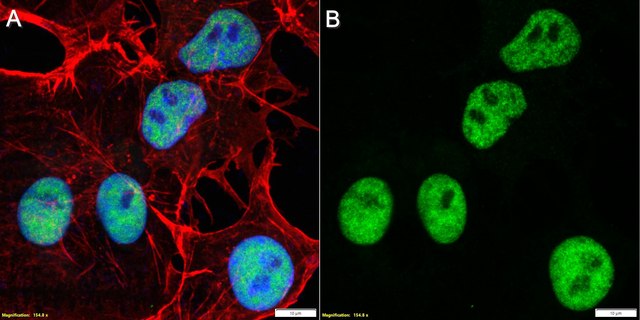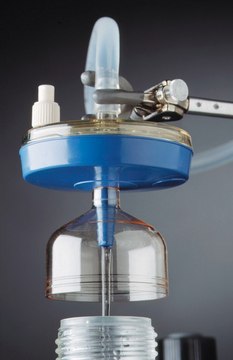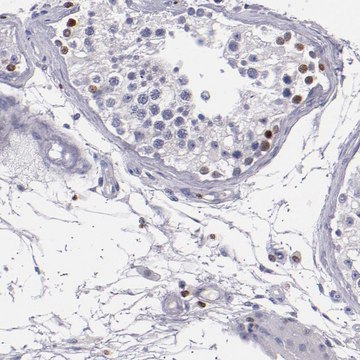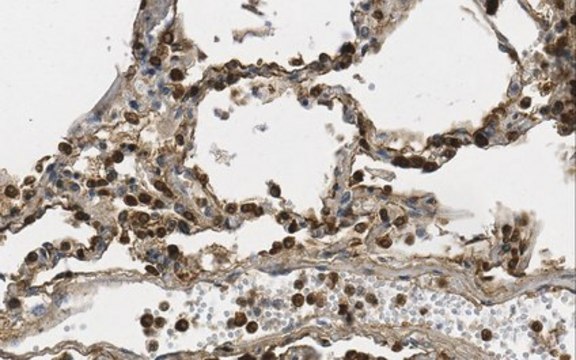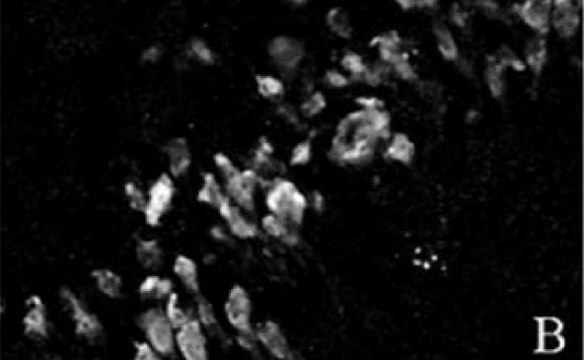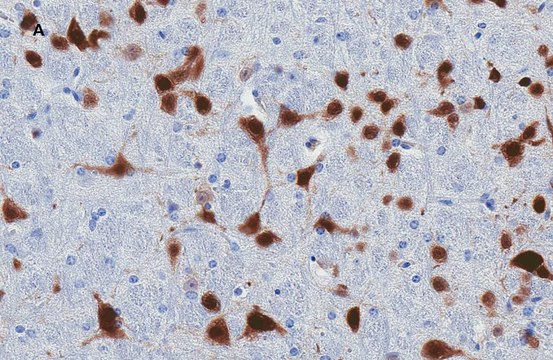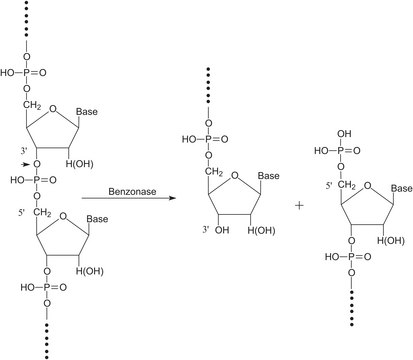MABN2316
Anti-Neogenin Antibody, clone 21A8
clone 21A8, from rat
Sign Into View Organizational & Contract Pricing
All Photos(1)
Synonym(s):
Neo1
UNSPSC Code:
12352203
eCl@ss:
32160702
NACRES:
NA.41
Recommended Products
biological source
rat
antibody form
purified immunoglobulin
antibody product type
primary antibodies
clone
21A8, monoclonal
species reactivity
mouse
packaging
antibody small pack of 25 μg
technique(s)
immunocytochemistry: suitable
western blot: suitable
isotype
IgG1κ
UniProt accession no.
target post-translational modification
unmodified
Gene Information
mouse ... Neo1(18007)
Related Categories
General description
Neogenin (UniProt: P97798) is encoded by the Neo1 (also known as Ngn) gene in murine species. Neogenin is a single-pass type I membrane protein that is expressed ubiquitously throughout the mid to late stages of gestation and in adult tissues. It strong expression is observed in the ventral region of the ventricular zone of the E15.5 mouse neural tube, as well as in the ventricular zones of the mesencephalon and rhombencephalon. Five different isoforms of neogenin have been described that are produced by alternative splicing. Isoform 3 and isoform 4 are shown to be expressed at higher level compared to other isoforms between E11.5 and E16.5. Neogenin is a multi-functional cell surface receptor that regulates cell adhesion in many diverse developmental processes, including neural tube and mammary gland formation, myogenesis and angiogenesis. It also serves as a receptor for members of the BMP, netrin, and repulsive guidance molecule (RGM) families. Interactions between netrin and neogenin result in a chemoattractive axon guidance response and cell-cell adhesion whereas its interaction with RGMa and RGMb can induce a chemorepulsive response. Neogenin is synthesized with a signal peptide (aa 1-36), which is subsequently cleaved off to produce the mature form that has an extracellular domain (aa 37-1136), a short transmembrane domain (aa 1137-1157), and a cytoplasmic domain (aa 1158-1493).
Specificity
Clone 21A8 is a rat monoclonal antibody that specifically detects murine Neuogenin. It targets an epitope with in the extracellular domain.
Immunogen
Epitope: extracellular domain
Murine Neogenin ectodomain region fused to N-terminal CD5 signal peptide and a C-terminal 2X StrepII Tag.
Application
Anti-Neogenin, clone 21A8 Antibody, Cat. No. MABN2316, is a highly specific rat monoclonal antibody that detects murine Neogenin and has been tested for use in Immunocytochemistry and Western Blotting.
Immunocytochemistry Analysis: A representative lot detected Neogenin in Immunocytochemistry applications (Kuhn, P.H., et. al. (2016). Elife. 5. pii: e12748).
Western Blotting Analysis: A representative lot detected Neogenin in Western Blotting applications (Kuhn, P.H., et. al. (2016). Elife. 5. pii: e12748).
Western Blotting Analysis: A representative lot detected Neogenin in Western Blotting applications (Kuhn, P.H., et. al. (2016). Elife. 5. pii: e12748).
Research Category
Neuroscience
Neuroscience
Quality
Evaluated by Western Blotting in Non-reduced NIH/3T3 cell lysates.
Western Blotting Analysis: 1 µg/mL of this antibody detected Neogenin in Non-reduced NIH/3T3 cell lysates.
Western Blotting Analysis: 1 µg/mL of this antibody detected Neogenin in Non-reduced NIH/3T3 cell lysates.
Target description
~163 kDa observed; 163.16 kDa calculated. Uncharacterized bands may be observed in some lysate(s).
Physical form
Format: Purified
Protein G purified
Purified rat monoclonal antibody IgG1 in buffer containing 0.1 M Tris-Glycine (pH 7.4), 150 mM NaCl with 0.05% sodium azide.
Storage and Stability
Stable for 1 year at 2-8°C from date of receipt.
Other Notes
Concentration: Please refer to lot specific datasheet.
Disclaimer
Unless otherwise stated in our catalog or other company documentation accompanying the product(s), our products are intended for research use only and are not to be used for any other purpose, which includes but is not limited to, unauthorized commercial uses, in vitro diagnostic uses, ex vivo or in vivo therapeutic uses or any type of consumption or application to humans or animals.
Regulatory Information
新产品
Certificates of Analysis (COA)
Search for Certificates of Analysis (COA) by entering the products Lot/Batch Number. Lot and Batch Numbers can be found on a product’s label following the words ‘Lot’ or ‘Batch’.
Already Own This Product?
Find documentation for the products that you have recently purchased in the Document Library.
Our team of scientists has experience in all areas of research including Life Science, Material Science, Chemical Synthesis, Chromatography, Analytical and many others.
Contact Technical Service